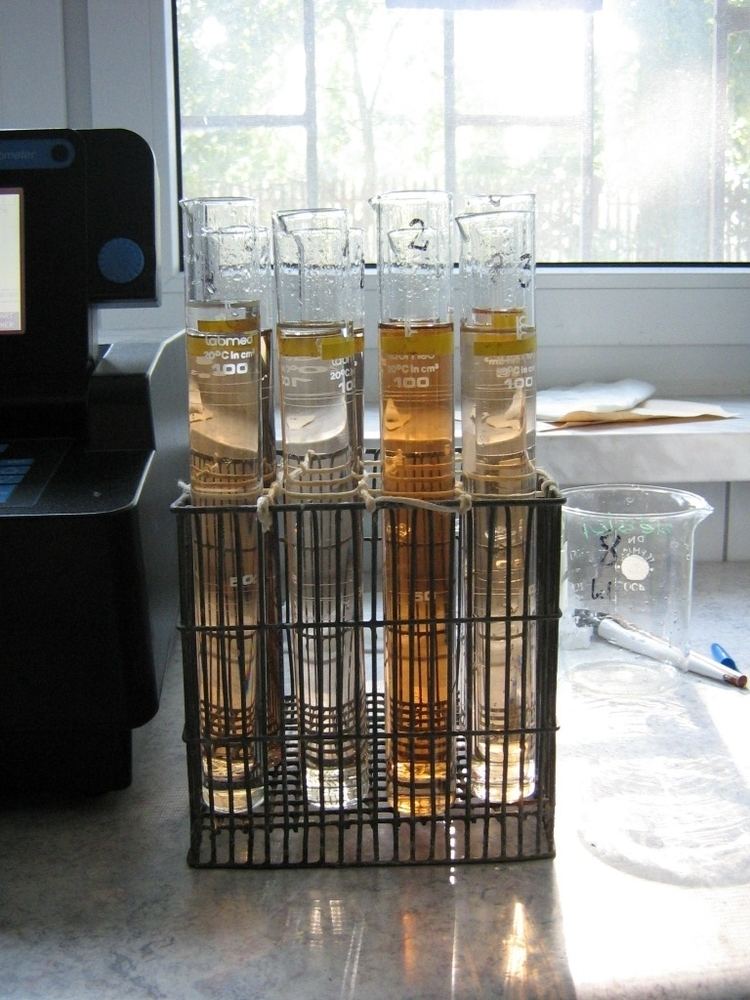 | ||
Nessler cylinders (also named Color comparison cylinders, Color comparing cylinders) are laboratory tubes with a fixed volume, made of glass with optically plane bottom. On the walls there are marks of the nominal stroke volume (usually 100 ml) and possibly one half-way mark (then usually 50 ml)
Nessler cylinders are used for colorimetric analysis, such as APHA color. The color of the substance contained in a Nessler cylinder is visually compared with the model. The tubes are often used to carry out a series of calibration solutions of increasing concentrations, which functions as a comparative scale. To minimize differences in the subjective impression of the color of the solution of the substance to be analyzed, cylinders of a series should have the same characteristics - height, diameter and thickness of glass. Basically there are three types of used cylinders:
These parameters (except volume), however, can vary significantly between two cylinders.
Cylinder Nessler are similar Hehnera cylinders. They differ in that they are scaled to full height, while the bottom to the tap through which the solution is dropped.
Currently, due to the spread of automated spectrophotometers, colorimetric assay methods using Nessler cylinders and visual assessment are used very rarely. Nessler cylinders are still used, however, as reaction vessels, in the same way as test tubes.
